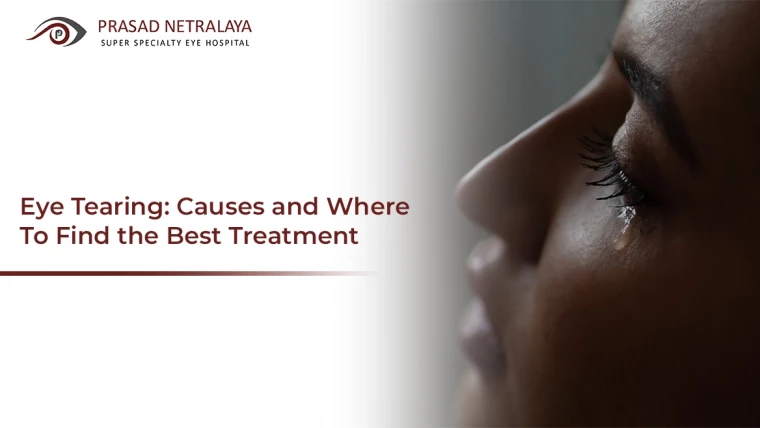If you have ever heard an eye doctor say they will perform the dry eye test or the tear test on you, or someone else — they were basically performing the Schirmer’s test. If the word sounds complex, we will decode the test for you! Read on to know about it in detail.
Table of Contents
What Is the Schirmer’s Test?
Your eyes maintain a stable level of moisture in themselves and eliminate foreign particles by producing tears. Ophthalmologists/eye doctors use Schirmer’s Test to understand if a person’s eyes make enough tears to keep themselves moist. If the eyes don’t make enough moisture, the patient may have to be treated for dry eyes.
This test is also known as the:
- Dry eye test
- Tear test
- Tearing test
- Basal tear secretion test
Why Is Schirmer’s Test Conducted?
Schirmer’s test confirms and determines the severity of dry eye. It is used to diagnose dry eye syndrome — a condition occurring when the tear glands are unable to produce enough tears to keep the eyes moist. It is mainly performed when a person experiences excessive dryness, persistent watering or tearing, or chronic irritation in the eye. These could occur due to various reasons, some common ones being ageing, diabetes, excessive computer usage, and Vitamin A deficiency.
If a person wearing contact lenses experiences discomfort or excessive dryness, it could be because there is something wrong with the tear function. That’s why the test is also commonly done before fitting contact lenses.
How Is Schirmer’s Test Conducted?
The procedure is fairly simple and is mainly performed on people experiencing symptoms of dry eyes.
Prerequisite: If you wear contact lenses, you should bring your glasses along with you for the test. It is advised not to wear your contact lenses for at least two hours after the test.
The doctor places a piece of filter paper in the lower eyelid of both the eyes and the patient closes their eyes. It is important for the patient to avoid squeezing or touching your eyes at this time, as doing so could alter the results. After 5 minutes, the filter paper is removed and the doctor assesses how much moisture the paper has, and how far the patient’s tears have travelled on the paper. The smaller the amount of moisture on the paper, the fewer the tears produced.
Schirmer’s test has been conducted for several decades. As an alternative to it, doctors may also assess tear production with a red thread test. However, newer tests are being developed to catch additional symptoms and causes of dry eyes.
What Is a Normal Schirmer Test Result?
A normal test result is when the level of tear production is over 10 millimetres (mm) of tears on the paper. Anything under 10 mm is considered to be an abnormally low level of tear production and a measurement of less than 5 mm is considered severe dry eye.
The results are based on the tears produced as measured on the strip of paper, and the measurements are also affected by the age of the person being tested. Older people are known to produce fewer tears in the test.
If you are suffering from dry eyes, want to take a dry eye test, or wish to have your eyes examined — get your eyes checked and treated at Prasad Netralaya, Mangalore and Udupi’s most trusted Eye Care Hospital. Our experienced staff is here to make sure that you receive the quality ophthalmological care that you deserve. Call us at +91 9513596565 or book an appointment if you wish to visit in person.



